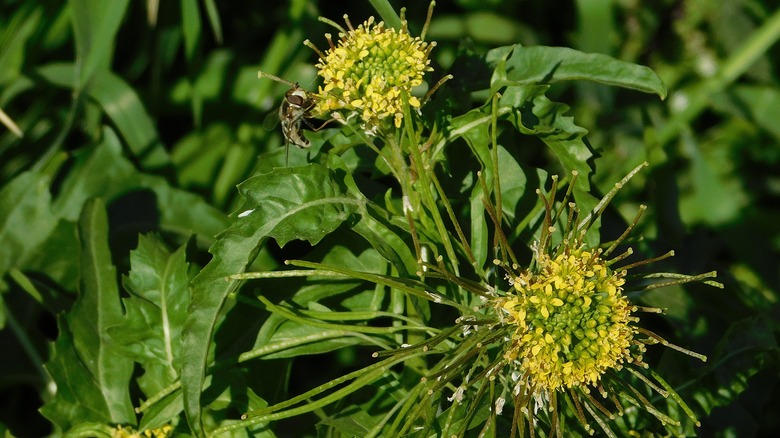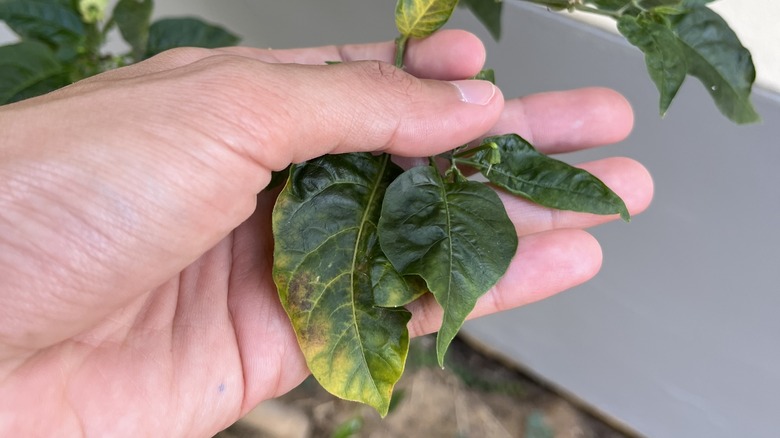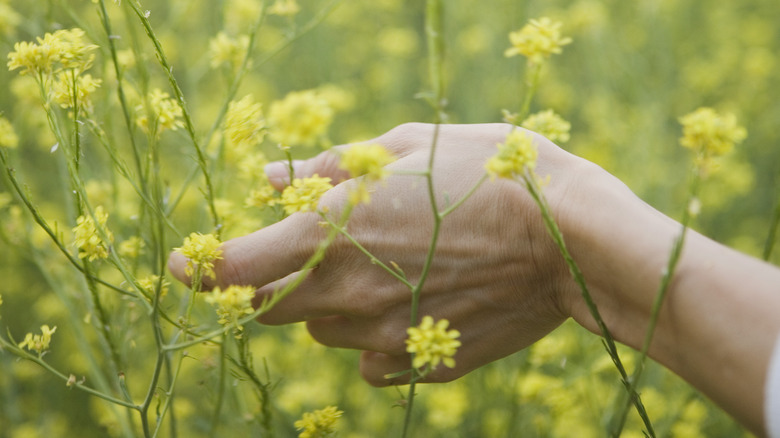You Don't Want To Find London Rocket Growing In Your Yard. Here's Why
One of the most enjoyable parts of the spring and summer is watching the flowers in our gardens bloom. It's especially rewarding to see colorful showstopping beautiful spring annuals return after the winter months. What's less enjoyable, however, is seeing common garden weeds return along with them. One such undesirable annual weed is the London Rocket (Sisymbrium irio), which is invasive and is known to spread the curly top virus to surrounding plants.
While it's not native to the United States, London Rocket was brought to America from Europe and can be found in the southwest, South Carolina, Florida, and other states around the Great Lakes. It mostly grows in desert-like conditions or disturbed areas such as fields, roadsides, and along walls. It's also known as Rocket Mustard or Tumble Mustard and is part of the Brassicaceae or mustard family. As such, London Rocket is edible. The leaves and flowers can be eaten raw, and the seeds can be ground into a powder to be used in baking and cooking. However, while its edible properties may make London Rocket seem like a desirable plant, it can actually be quite harmful to other plants, making it a weed you don't want to find in your garden.
How London Rocket can be harmful
Weeds are pesky enough as they can be unsightly and take up valuable space for other plants to grow in your garden, but some weeds like London Rocket can have even more detrimental effects. London Rocket is known to host the curly top virus. This disease can cause deformation in plants, stunt their growth, and cause leaves to become yellow or twisted and curled. In the most severe cases, this can cause the infected plant to die. Plants often affected by the curly top virus include beets, Swiss chard, spinach, beans, watermelon, cucumbers, squash, and some varieties of tomatoes. In addition to hosting the curly top virus, London Rocket also provides nutrients to insects such as beet leafhoppers that can spread the disease to other plants even after London Rocket has died off in the summer.
Furthermore, London Rocket is also an invasive plant you should never allow to grow in your yard. As a winter annual, it typically begins growing before other plants, allowing it to easily take over and push out native species. It also grows aggressively due to the thousands of seeds it produces that can spread quickly in open areas. To keep it from growing rapidly and harming other plants, it's crucial to remove it as quickly as possible.
How to identity London Rocket and remove it from your yard
Before you can begin removing London Rocket from your yard, you'll first need to identify the weed. The base of the plant is a rosette of hairless leaves that each grow to about 6 inches in length. From the base, erect stems grow up to 20 inches tall and are mostly green but can sometimes have a purple hue. Smaller leaves branch off the stem that appear more oblong or narrow. When in bloom, which usually happens from January to May, London Rocket produces bright or pale yellow flowers that are 0.2 to 0.3 inches in diameter. Each flower has four petals. Beneath the soil, London Rocket grows a taproot that has many branching horizontal fibrous roots.
To remove London Rocket, if there's not a huge infestation, try hand pulling or digging up the plant before it begins to seed. Early burning has also been shown to be effective in controlling London Rocket. You can also try applying herbicides that contain glyphosate, imazapic, or imazapyr. However, as always, it's important to take great care when spraying weed killer in your yard as not to disturb surrounding plants.


